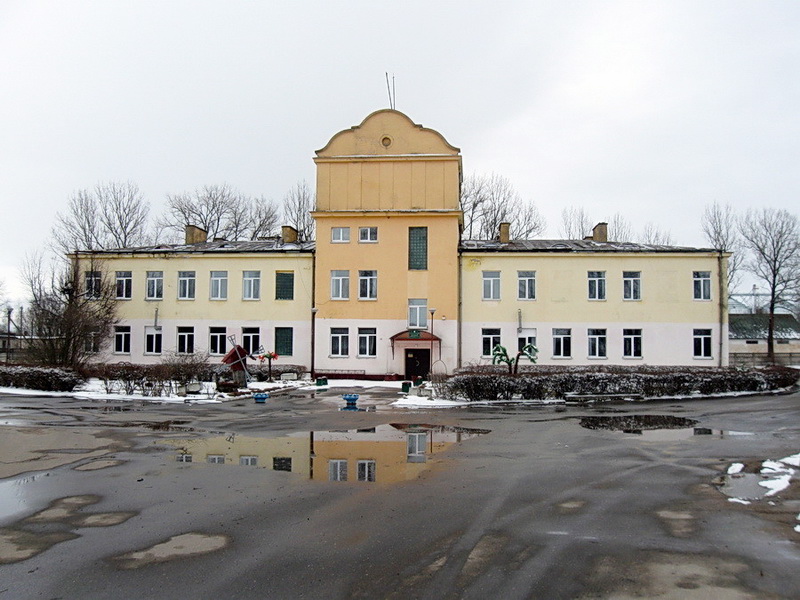History
After Kletsk became part of Poland in 1921, the Polish government launched a large-scale program to strengthen the eastern borders. In 1924, it was decided to station a KOP garrison in the town, tasked with guarding the frontier and countering sabotage. The 9th Battalion, named «KOP Kletsk», became part of the «Nowogródek» brigade. By 1926, the entire KOP structure numbered around 25,000 servicemen, with a significant number based in Kletsk. Border patrol dogs were also trained here, and the barracks hosted high-profile visitors, including Polish President Ignacy Mościcki.
Architecture
The barracks complex, built in 1924–1925 based on the design by Tadeusz Nowakowski and under the supervision of engineer Zygmunt Wygonowski, features elements of Art Nouveau architecture. Construction materials included rubble stone, red brick, and wood. The main building is two stories high with a tall attic floor and expressive facade details. In addition to barracks, the garrison included a headquarters, stables, storage facilities, officers’ quarters, and auxiliary buildings. Later, one of the buildings was converted into residential housing and then repurposed for administrative use. Today, it houses the Kletsk District Hygiene and Epidemiology Center.
Excursions
The KOP barracks in Kletsk can be visited as part of an individual tour from Minsk, which we will gladly tailor to your preferences. This tour of Kletsk includes visits to historical landmarks from the Polish period and offers deeper insights into the region's military history.
